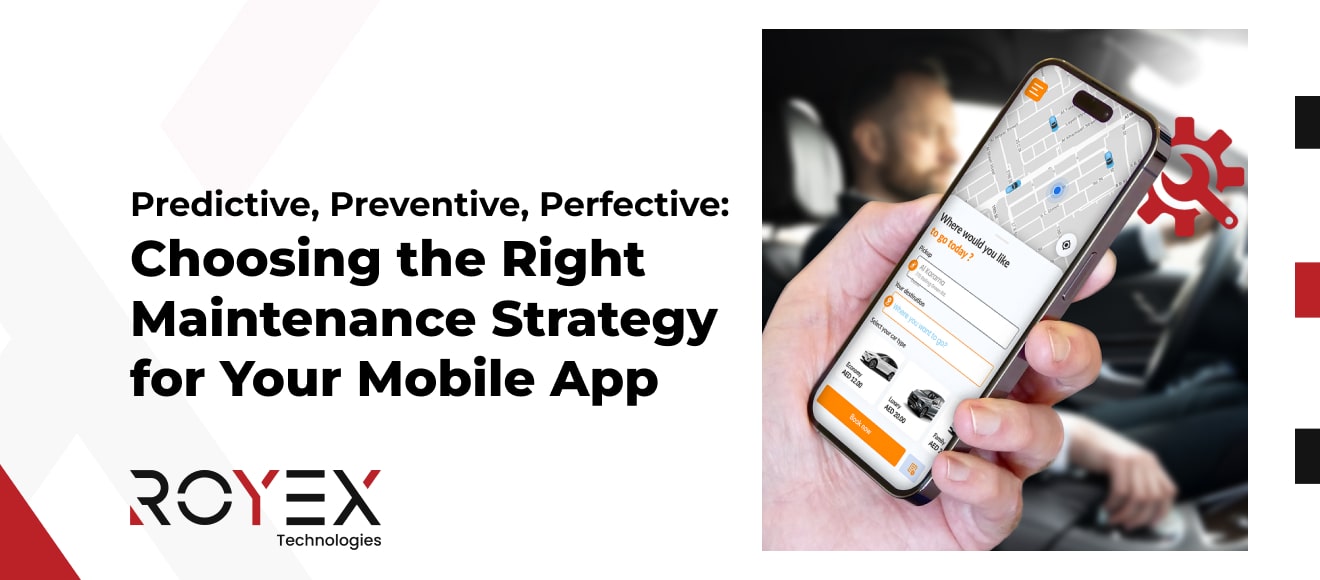
Predictive, Preventive, Perfective: Choosing the Right Maintenance Strategy for Your Mobile App
Mobile-app success no longer hinges on launch day—it lives or dies by what happens after the app store debut. In 2025:
-
Annual maintenance still absorbs 15 – 25 % of the original build budget for most products
-
Google has already pulled ≈1.8 million apps (~47 %) from Play this year for quality violations
-
The median crash-free session rate climbed to 99.95 %, setting an unforgiving quality bar
-
A single data breach costs US $4.44 million on average
With stakes like these, picking the right maintenance approach is mission-critical. Let’s break down the three dominant strategies—Predictive, Preventive, and Perfective—and when each one belongs in your roadmap.
1️⃣ Predictive Maintenance
What it is: Using real-time analytics, crash-logs, and machine-learning models to forecast failures before users feel them.
Best for:
-
Large user bases generating rich telemetry
-
Revenue-critical apps where a single outage equals lost sales
-
Products running on complex back-ends or micro-services
Key metrics to watch: error-rate trends, CPU/RAM anomalies, battery-drain patterns.
Benefits:
-
Cuts unplanned downtime by up to 30 % (vendor benchmarks)
-
Enables targeted hotfixes, reducing dev hours wasted on guesswork
2️⃣ Preventive Maintenance
What it is: Scheduled, systematic tasks—security patching, SDK upgrades, OS compatibility tests—that avoid predictable issues.
Best for:
-
Compliance-heavy sectors (fintech, healthcare, government)
-
Apps with seasonal usage peaks (e-commerce, events)
Checklist items:
-
Quarterly penetration tests (a fraction of that US $4.44 M breach bill)
-
Monthly dependency reviews to catch deprecated APIs
-
Bi-annual UI audits for new form factors (foldables, wearables)
3️⃣ Perfective Maintenance
What it is: Continuous enhancement—UX tweaks, performance tuning, small features—that perfect the product and fuel growth.
Best for:
-
Competitive markets where user experience is the moat
-
Freemium or subscription models that live on retention metrics
Typical wins:
-
Micro-UI improvements can lift conversion by double digits
-
Sub-second response times correlate with higher in-app spend
How to Choose—or Combine—Your Strategy
|
Scenario |
Recommended Focus |
|
Early-stage MVP |
Preventive (low-cost stability), Light Perfective (user feedback loops) |
|
Scaling to millions |
Predictive + Preventive (avoid outages), Selective Perfective (growth features) |
|
Highly regulated app |
Heavy Preventive (compliance), Predictive (security analytics) |
|
Mature market leader |
Predictive (cost control), Strong Perfective (stay ahead of rivals) |
Most product teams adopt a hybrid approach—e.g., predictive analytics for back-end health, preventive cycles for security, and perfective sprints tied to growth OKRs.
Why Royex Technologies Is the Maintenance Partner You Need
Flexible service models
-
Ultimate Maintenance (fixed yearly fee) – a 360° worry-free package: predictive monitoring, preventive schedules, perfective enhancements, 24/7 support.
-
Hourly Maintenance – pay only for specific fixes or feature tweaks—ideal for startups and seasonal apps.
What sets us apart
-
FinOps DNA: we typically cut clients’ cloud bills by 20 – 30 % in month one.
-
Full-stack experts: 12 years in Dubai, 500+ apps across iOS, Android, Flutter, and serverless stacks.
-
Security first: ISO-aligned processes, continuous vulnerability scanning, and rapid patch SLAs.
-
Proactive mindset: real-time dashboards and AI-driven alerts keep your crash-free rate comfortably above that 99.95 % threshold.
Whether you need a single hotfix or an all-inclusive program, Royex keeps your app fast, secure, and five-star ready—while you focus on innovation.
Building something new or planning a major overhaul? Explore our Mobile Apps development company Dubai offerings to turn fresh ideas into high-performance apps that scale.





